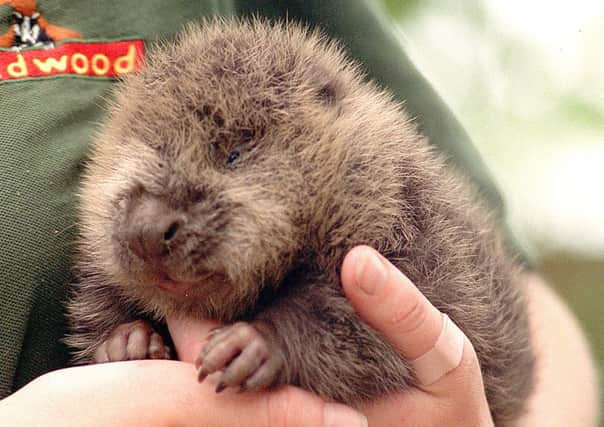Is it time to allow Scotland to go wild?
This article contains affiliate links. We may earn a small commission on items purchased through this article, but that does not affect our editorial judgement.


HERE’S a question for you. Do you wish to see lynx and beavers living freely in Scotland again within our lifetimes?
Let’s throw in another question. If these animals never returned to the wilds of Scotland, would that really bother you?
Advertisement
Hide AdAdvertisement
Hide AdThere are simple answers to these questions. The problem is that my answer could be the total opposite of yours. However, these are questions that we must reach consensus on if we are to agree an intelligent way forward for the conservation of Scotland’s wildlife and our landscapes.
Make no mistake about it, both beavers and lynx will trigger changes in our natural environment that will force us out of our current comfort zones and take us down the road to “re-wilding” some of our favourite places.
Are we ready to allow nature more say on how our landscape may look and function in places?
There will certainly be physical changes that some of us will like and others will not, whilst others might not even notice. There will also be knock-on changes for the rest of our wildlife which could prove initially dramatic as our natural environment re-boots itself to the return of such key species. The life of a roe or red deer will become very much different in an area where a top predator is present whilst those species that benefit from wetlands will undoubtedly gain from the activities of beavers.
Learning from the experiences of other countries which have seen the reintroduction of key species, or indeed which have always lived with lynx and beavers, will be invaluable in any debate. However, in the words of a certain Donald Rumsfeld, there will be “known unknowns” and, very likely, “unknown unknowns” should these species live freely in Scotland again. As a society, we are not always good at dealing with uncertainty. Nevertheless, not having all the answers is not a reason to sit on the fence and avoid making a decision on the future of the lynx or beaver in Scotland.
Where do we find the answers then? Through a cost-benefit analysis?
At present, we seem to live in a society that regularly puts a monetary value on all things, and sadly, wildlife is one of them. Increasingly, we, as a nation, no longer decide on the fate of our wildlife from the heart, but instead, from the use that we can make from it. This results in debates along the lines of what does man stand to gain or lose from the impact of a reintroduced species. Gains typically get reduced to how many millions enter the economy from people travelling to an area to watch the species, whilst losses are calculated as the damage to local people’s livelihoods or property. Does it help us to know that a species might bring £5 million a year into an area but cost local farmers £150,000 in damages?
While this may provide some useful pointers to the direct impact, it ignores the often far greater values that many of us attach to the right of wild nature to share our countryside with us or the satisfaction we gain from knowing that there are parts of Scotland where beavers swim in our lochs, even if we never want to visit them ourselves.
Advertisement
Hide AdAdvertisement
Hide AdMany of us believe that every species has a right to live where it belongs and the environment of Scotland is the poorer without it. We intrinsically know this, and the fact that we obsess in our media about trying to save the last members of a rare species (usually furry, feathered or bright-eyed) shows how the value we attach to it increases with its increasing rarity.
But how should we value species that were formerly native in Scotland but that we have now eradicated?
Conversely, while we can quantify the costs of livestock lost to re-introduced species, how do we assign a value to the fear, however irrational, that we might have walking through a dark wood inhabited by lynx?
We will continue to debate the pros and cons of whether beavers and lynx should return to live freely in Scotland and arguments on both sides of the debate are equally worthy.
However, the final question is possibly the most important. Does it bother you whether beavers and lynx live in Scotland or not?
The answer lies deep within us all and should be the one that determines this debate.
• Lindsay Mackinlay is nature conservation adviser with the National Trust for Scotland www.nts.org.uk
SEE ALSO